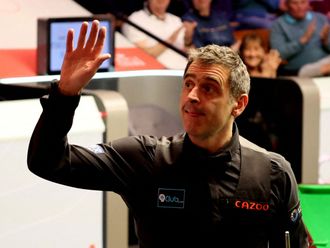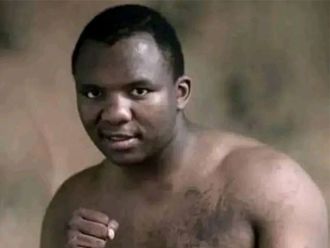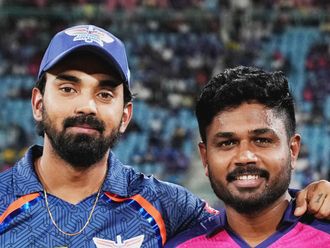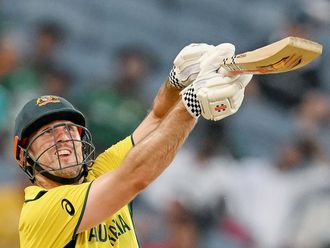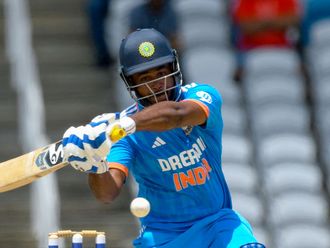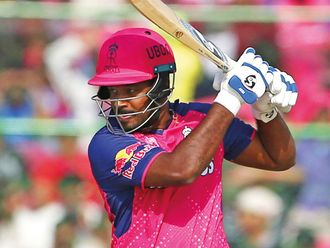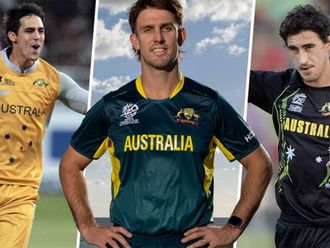The Los Angeles Lakers’ 2014-15 campaign had deteriorated into little more than a freak show.
Roll up, roll up and watch ringmaster Kobe Bryant as he attempts to impersonate his younger self on a nightly basis.
Watch the former highwire superstar toil through an act that is now almost totally ground-based.
Be amazed as the ex-acrobat attempts circus shots that were earlier part of his nightly routine but now look like they necessitate a safety net.
Marvel as Kobe and Co make the Lakers’ playoff hopes disappear!
Mercifully, the show is over, at least for now. Bryant’s season was ended by a torn rotator cuff in his right shoulder. He will be out for nine months, according to ESPN.
This disaster of a season is not all Bryant’s fault, of course. Blame the guys upstairs for his current cast of teammates. This roster would not have been fit to practise against his five championship squads from the 2000s.
But Kobe has to share in the blame.
Rather than adapting his game to legislate for changes to his body, caused by age and injury, he came out shooting. And it took an injury, not a career-worst field goal percentage of 37.3%, to stop him.
Bryant may have thought pouring more points into his career scoring pot – and passing Michael Jordan in third on the all-time list – was strengthening his legacy. It may have been doing the opposite.
The 36-year-old was becoming a punchline among supporters of rival teams. Fans turned out to get one last chance to see the former megastar as he transitioned into legend. Bryant version 19.0 was basketball’s equivalent of Mickey Rourke’s eponymous character in 2008 sports drama The Wrestler.
Yet he was taking 20.4 shots per game this season, according to basketball-reference.com. His career average is 19.6, but if you subtract his 1996-97 rookie season and the measly 5.9 shots he was allowed by Shaq and Co, his career rate is 20.4 – identical to the current campaign.
His usage rate (the percentage of his team’s plays uses while on the court) sits at 34.7% for this season, second in the league among players who have played more than five games, and way above his career average of 31.8%. Surely his declining physical skills should have necessitated a change.
Is it possible for an NBA champion and former MVP to put aside his ego and change?
The simple answer is yes – and you only have to travel two US states from Kobe’s California home to find the answer. In Texas, two players aged in their late-30s are growing old much more gracefully than their fellow 1990s draftee.
Tim Duncan of the San Antonio Spurs has long since prioritised team success over individual statistics. Now 38, the first pick in the 1997 NBA Draft has accepted a smaller role in his team’s offence with every passing season since his dominant peak.
Duncan is actually in the midst of a statistical renaissance of sorts. He is currently averaging 10 rebounds and two blocks per game, something he hasn’t done since 2006-07, and is allowing opponents to shoot just 46.6% at the rim – an elite number. These figures alone would justify a case for NBA All-Defensive team inclusion.
Yet he takes just 11.8 shots per game on a usage rate of 23.8%, both career-lows. Does he care? Doubtful. The reward for his team-first attitude was a fifth NBA championship last June.
Perhaps a better comparison is elsewhere in the Lone Star State.
Dallas Mavericks’ German legend Dirk Nowitzki continues to defy nature in his 36th year. The 1998 draftee is a fully paid-up member of the 50-40-90 Club and remains one of the deadliest shooters in the game.
Both he and Bryant made careers of working in the high post to create their own shots in a variety of ways. Only one has cut down the one-on-ones in favour of shots created by others, reducing the wear-and-tear of repeated post-ups and off-the-dribble pull-ups.
Of players who have played at least 10 games, Nowitzki is second in the league in catch-and-shoot points with 8.2 per game. He trails only the 9.3 from Atlanta Hawks swingman Kyle Korver (who is on course to invent the 50-50-90 Club).
Before his injury, Kobe was scoring just 2.7 points per game on shots generated by a teammate.
In contrast, Bryant remains second in the league in points per game from pull-up shots with 8.3. Dirk is scoring just 3.7 points per game on such self-generated shots.
It shows that Nowitzki has allowed his game to adapt with age, unlike Bryant.
While Nowitzki’s usage rate of 26.6% hovers just below his career average, he is shooting a full two shots less than his career average of 16.6. His scoring average is down to 18.9, his lowest since his second season, not counting an injury-hit 2012-13 campaign. Yet his three-point attempts are 0.5 per game up on his career average. Fewer post-ups, more spot-ups.
Dirk too is creeping up the career scoring ladder, by the way. This season he has passed Hakeem Olajuwon, Elvin Hayes and Moses Malone to move into seventh place on the all-time list. He could pass Shaquille O’Neal this season, and has a shot at Wilt Chamberlain and Jordan, though he trails Bryant by more than 4,000 points.
Of course, both Duncan and Nowitzki benefit from working within offences masterminded by brilliant coaches, and neither man is unquestionably the most valuable player on their current team – a nice situation for an ageing superstar and not one Bryant benefits from.
So let’s put Bryant in a similar situation next season. Imagining this is not as hard as you might think.
First, Kobe’s season-ending injury has led to some suggesting he should hang up his No 24 for good. Make no mistake, the Black Mamba will be back next year to earn his $25 million salary.
The Lakers management would surely love to build a contender while Kobe is still around to aim for the sixth ring he so craves. They will have cap space and a high draft pick this summer, as long as they finish with one of the five worst records in the league, otherwise that pick goes to Phoenix. They are currently looking good in fourth spot in the NBA Reverse Standings.
Let’s give Lakers brass the credit they don’t yet deserve and presume they can turn those assets into a real, live team as soon as next season.
First, the draft. If LA can use their high pick on a difference-maker such as projected top pick Jahlil Okafor or potential game-changing guard Emmanuel Mudiay, they should immediately improve.
Next, they need to find a quasi-star to put next to Bryant. If they draft Mudiay, perhaps Memphis Grizzlies centre Marc Gasol can be persuaded to return to the team with which he began his NBA career. If they strike gold and land Okafor, perhaps Phoenix Suns guard Goran Dragic arrives to share the backcourt with Bryant, a player he recently praised to the press.
Either way, it’s new point guard and a new centre; a rookie and an All-Star.
Next on their wanted list should be a mid-level free agent small forward such as Luol Deng or Wilson Chandler. Memphis’s Jeff Green has a player option for next season, while Tobias Harris, Jimmy Butler and Kawhi Leonard are restricted free agents. LeBron James also has a player option, but let’s not delve even further into fantasy than we had with Butler and Leonard.
If all goes to plan, and if current rookie power forward Julius Randle can come back from a broken leg and begin to live up to some of his potential immediately, you have the makings of a team.
But team is the operative word.
Bryant would no longer be able to use a poor supporting cast to justify his shot-chucking. In reality, he would need to become the supporting cast.
Can he cut back by six-to-eight shots per game and funnel his energies into finding space for better shots and facilitating for others? Does he care that he would no longer be the first – or second – option on offence?
A lot of pieces have to fall into place before we would have an answer, but finding out is not a bad reason to root for the Lakers’ rebuild. Better that than a return to this season’s circus of horrors.
Jamie Goodwin is Web News Editor on gulfnews.com and has been an avid follower of the NBA for more than 20 years.


